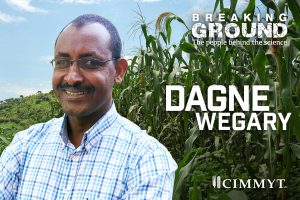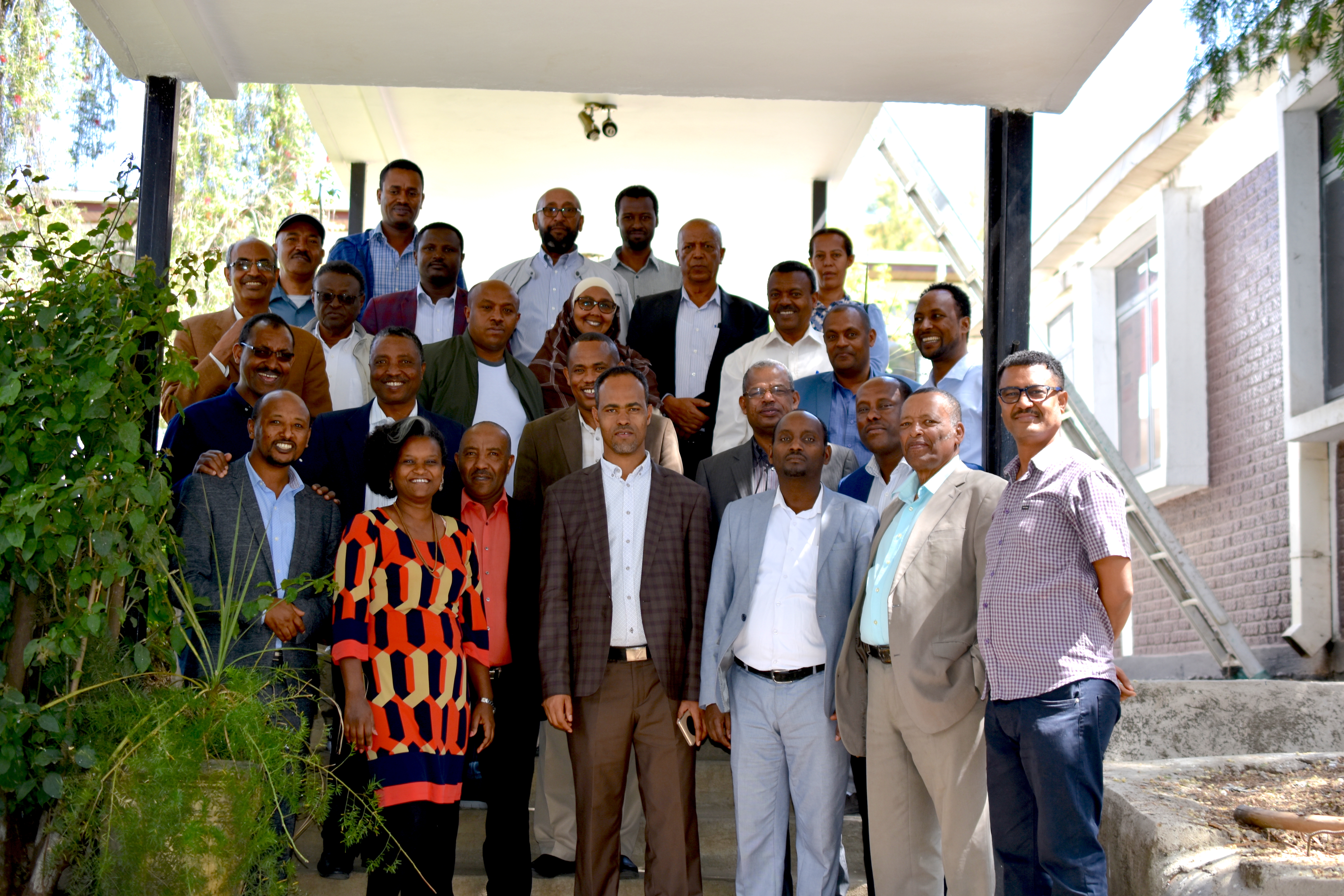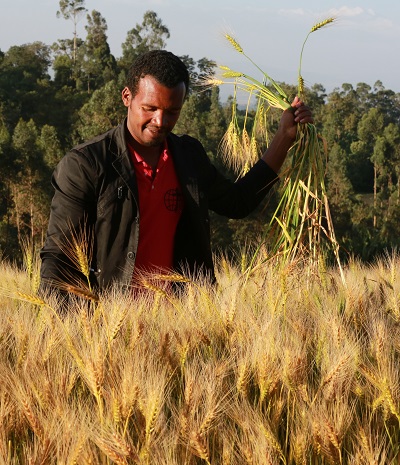 Like many scientists at the International Maize and Wheat Improvement Center (CIMMYT) who grew up in smallholder farm households, Dagne Wegary draws inspiration from recollections of adversity and has found in science a way to make things better.
Like many scientists at the International Maize and Wheat Improvement Center (CIMMYT) who grew up in smallholder farm households, Dagne Wegary draws inspiration from recollections of adversity and has found in science a way to make things better.
“I saw how my community struggled with traditional crop and livestock husbandry and, at an early age, started to wonder if there was a science or technology that might ease those hurdles,” Wegary said, referring to his childhood in a village in Wollega, a western Ethiopian province bordering South Sudan.
“I chose to study and work in agriculture,” Wegary explains. “Even though the farming system in my home village has not changed significantly, I am happy that the community is now among Ethiopia’s top maize producers and users of improved seed and other agricultural inputs.”
As a maize seed system specialist, Wegary works at the nexus between breeding science and actual delivery of improved seed to farmers. He interacts regularly with diverse experts, including CIMMYT and Ethiopia’s breeders and members of the national ministries of agriculture, the Ethiopia Agricultural Transformation Agency (ATA), non-governmental organizations including Sasakawa Global-2000 and World Vision, and especially public, private or community-based seed producers.
Quality seed is farmers’ principal means to improve productivity and secure food, according to Wegary, who calls it “the carrier of complementary production technologies, which in combination with improved agronomy can significantly increase crop yields.”
“I am most happy with Ethiopia’s increased maize productivity and self-sufficiency, which is due partly to the use of improved technologies to which we all contribute,” he said, noting that maize grain yields in Ethiopia had more than doubled since the 1990s, reaching 3.7 tons per hectare in 2016, a level second only to that of South Africa, in sub-Saharan Africa.
According to Wegary, these improvements are the result of strong government support for maize research and development, along with the strong partnership between CIMMYT and the national program that has led to the release of high-yielding, stress tolerant and nutritionally-enriched maize varieties. He said that farmers’ have also increased their use of improved technologies and that public, private and community-based companies now market seed.
“Supplying seed used to be highly-centralized, but farmers’ main sources of seed now are cooperatives that buy from seed companies or companies that market directly to farmers” Wegary explained. “Many companies have their own stockists and dealers who directly interact with farmers.”
Before joining CIMMYT, as a scientist with the Ethiopian Institute of Agricultural Research (EIAR), Wegary helped to implement a number of CIMMYT-led projects. “These allowed me to know CIMMYT very well and sparked my interest in joining the Center and working with its high-caliber and exemplary scientists.”
A plant breeder by training with a doctoral degree in breeding from the University of the Free State, South Africa, soon after joining CIMMYT Wegary began to contribute to projects to develop and disseminate seed of improved maize varieties with high levels of drought tolerance and enhanced protein quality.
He has been involved since the early 2000s in promoting quality protein maize (QPM). The grain of QPM features enhanced levels of lysine and tryptophan, amino acids that are essential for humans and certain farm animals. Wegary took part in a CIMMYT project that supported the release of five new QPM varieties.
“Many companies are now producing and marketing QPM in Ethiopia,” Wegary said. A 2009 study in the science journal Food Policy found that eating QPM instead of conventional maize resulted in 12 and 9 percent increases in growth rates for weight and height, respectively, in infants and young children with mild-to-moderate undernutrition and where maize constituted the major staple food.
Wegary believes sub-Saharan Africa’s biggest challenges include climate change-induced heat and drought, natural resource depletion, and pest and disease outbreaks, coupled with increasing populations. In combination these factors are significantly reducing food security and the availability of resources.
“I want to be a key player in the battle towards the realization of food and nutritional security, as well as the economic well-being of poor farmers, through sustainable and more productive maize farming systems.”

 Nutrition, health and food security
Nutrition, health and food security 

